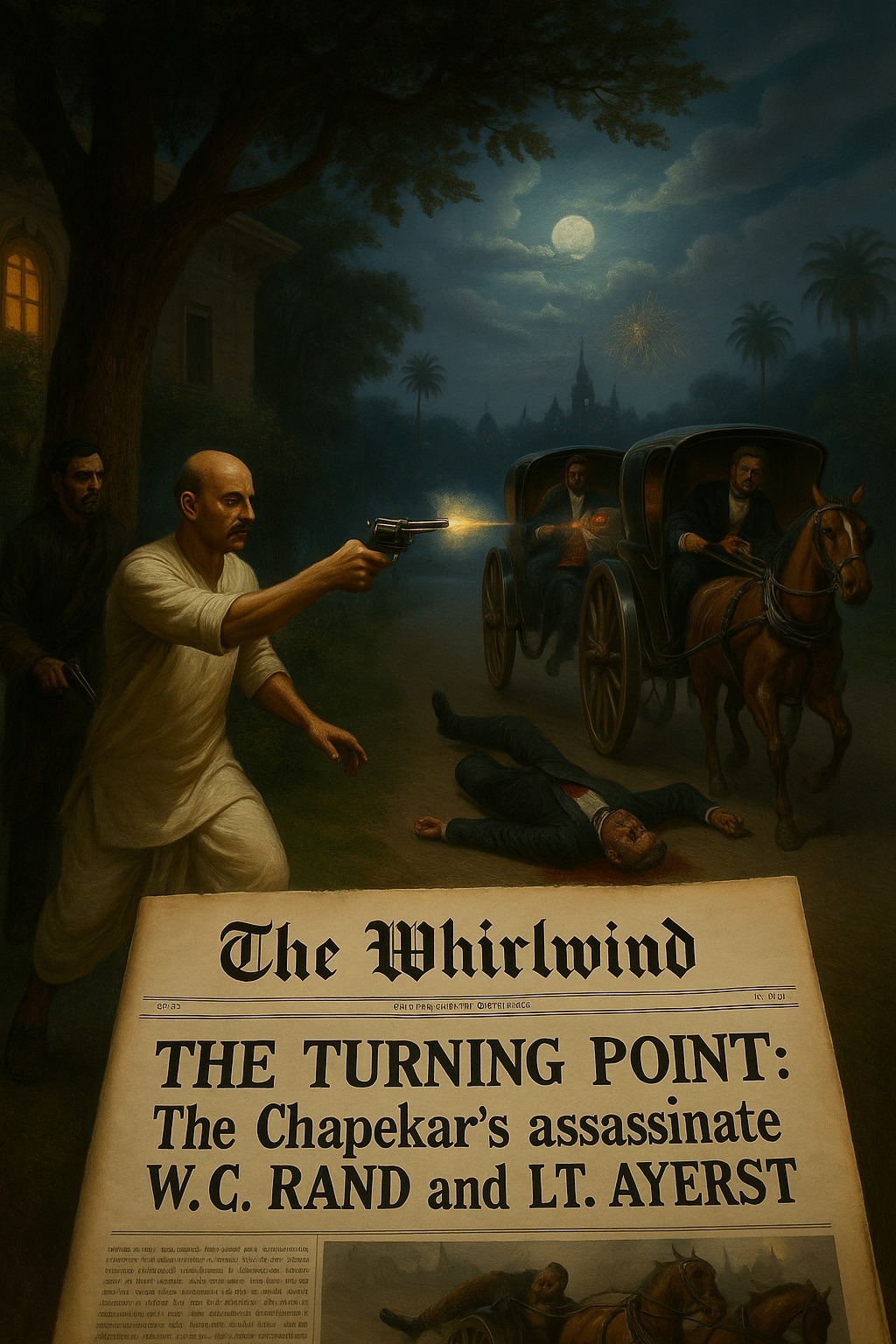On the night of June 22, 1897, two British officials — Walter Charles (W.C.) Rand, Plague Commissioner of Pune, and Lieutenant Charles Egerton Ayerst, his military escort — were assassinated by Indian revolutionaries Damodar and Balkrishna Chapekar.
The attack, carried out on Ganeshkhind Road (now Senapati Bapat Road), became one of the earliest and most symbolic acts of militant resistance against British colonial rule in modern Indian history.
Background: Plague, Oppression, and Public Anger
The event unfolded during a devastating outbreak of bubonic plague that began in Bombay in 1896 and soon spread to Pune. In response, the British government invoked the Epidemic Diseases Act of 1897, granting sweeping powers to officials.
Appointed as Plague Commissioner, Rand oversaw harsh and deeply resented containment measures. British troops and plague officers entered homes without warrants, forcibly removed the sick, imposed quarantines, and frequently disregarded religious and cultural norms.
Reports of harassment — including physical abuse of women — circulated widely, deepening resentment. For many Indians, these actions were not merely public health measures but symbols of the broader humiliation and injustice of colonial rule.
The Chapekar Brothers’ Decision
The Chapekars — Damodar, Balkrishna, and their younger brother Vasudev — came from a nationalist-minded Chitpavan Brahmin family in Chinchwad. Influenced by rising anti-colonial sentiment and frustrated with the slow pace of constitutional protest, they resolved to take direct action.
Their target: the man they saw as responsible for Pune’s suffering — W.C. Rand.
The Assassination
On June 22, 1897, Pune was celebrating Queen Victoria’s Diamond Jubilee. That night, Rand and Lt. Ayerst were returning from a reception at Government House when the Chapekars struck.
- Ayerst was shot dead instantly.
- Rand sustained severe injuries and died on July 3, 1897.
Damodar was the principal shooter, with Balkrishna assisting. Vasudev and associates such as Mahadev Ranade were later implicated for their roles in planning, logistics, and eliminating informants working for the British.
The brothers initially escaped, but in the following months, Damodar was captured, tried, and executed in April 1898. Balkrishna and Vasudev were later arrested and met the same fate.
Impact and Legacy
The assassination sent shockwaves through colonial India. It was one of the first targeted killings of British officials for explicitly political reasons.
- British response: Intensified surveillance, arrests, and crackdowns on nationalist groups.
- Moderate reaction: Leaders of the Indian National Congress (INC) publicly condemned the act.
- Revolutionary reception: Among emerging militant circles, the Chapekars became icons of resistance.
One of those deeply influenced was a young Vinayak Damodar (Veer) Savarkar, who later chronicled their story in a biography so provocative that the British banned it. For Savarkar and others, the Chapekars symbolized a new phase in the freedom struggle — one where armed resistance was seen as a legitimate means of achieving liberation.
Final Thoughts
The killing of W.C. Rand and Lt. Ayerst in 1897 was more than an act of vengeance — it was a political statement. It marked a clear break from petition-based protest and foreshadowed the rise of revolutionary nationalism in India.
Though controversial, the Chapekar brothers’ defiance remains a reminder of the shifting mood of the late 19th century — a moment when a growing number of Indians began to believe that freedom could not be won through appeals alone, but through direct and, if necessary, violent action.
Do you think the Chapekar brothers’ actions were justified given the British conduct during the plague in Pune? Should violent resistance be considered a legitimate form of protest under oppressive regimes? How do you think this assassination was perceived differently by Indians and the British at the time? Would freedom fighters like Veer Savarkar have followed a different path without the example of the Chapekar brothers? Share your insights in the comments below!
Sources:
SAMPATH, Vikram. 2019. Savarkar (Part 1). Echoes from a forgotten past. 1883-1924. Penguin Random House India: Gurgaon.
KEER, Dhananjay. 1988. Veer Savarkar. Third Edition. (Second Edition: 1966). Popular Prakashan: Bombay (Mumbai).


Leave a Reply